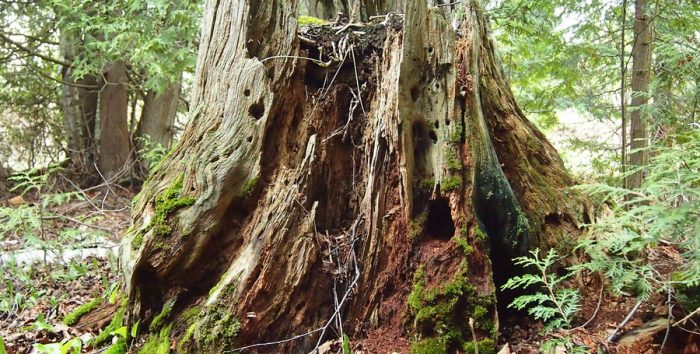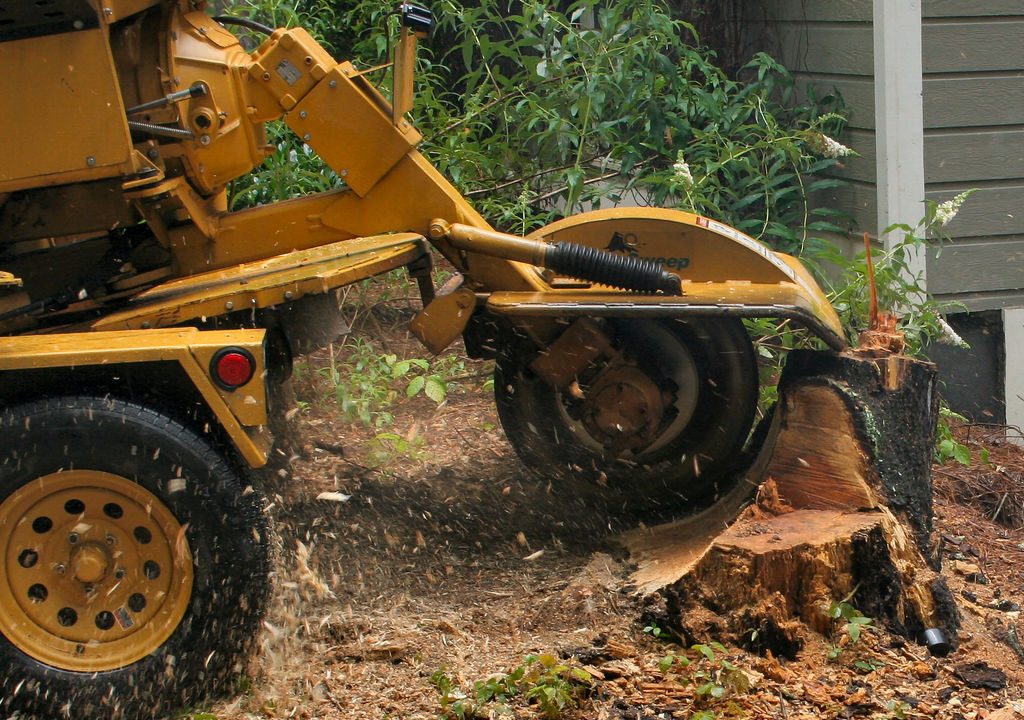Here is all you need to know:
- Remove the tree stump or leave it in the ground?
- The different options for removing tree stumps
- How to keep the stump removal cost down

Here is all you need to know:
Quick Free Quote
Our tree care specialists are always available to answer your questions and give you as much help as they can.
Call Us On 0141 280 3059

After a tree is cut down and removed there is still a tree stump to deal with. Sometimes the tree stump can be left raised above the ground (and chemically treated if suitable) and be used for wildlife or decorative purposes.
If the tree stump is cut off close to the ground then suckering could occur when new shoots from the tree start to grow. However, if these are cut back a few times then the tree stump will usually finally die.
Alternatively, if the tree has been freshly cut then herbicides can be applied to kill the stump but this can sometimes have environmental implications and safety issues with wildlife or pet poisoning. We prefer organic solutions.
If left in the ground there is a chance that several species of fungus may start to grow into the dead root system. One such group of fungi known as Honey Fungus can be very bad for the health of plants and trees around the tree stump, killing many susceptible species.
Tree species which are particularly susceptible to honey fungus include: birch, cypress, beech, holly, privet, apple, pear and willow.
There are however some species of trees and plants which are resistant (eg. Black walnut and box elder) to honey fungus and Arborist Direct Glasgow tree surgeons will be able to advise on the plants affected.
For more information visit the Royal Horticultural Society website at this link. (https://www.rhs.org.uk/advice/profile?PID=180 )
Apart from the potential for health implications from Honey Fungus there are often other reasons to remove a tree stump.


Usually the cheapest and most convenient time to treat or remove a tree stump and its roots is at the same time that the tree is cut down and removed. If tree surgeons have brought equipment to cut and remove the tree, then they can bring tree stump removal equipment at the same time.
There are generally 3 levels of removal depending on the reason for taking the stump out.
For honey fungus, if it is safe to do so, then the remaining hole can be burnt. The infected roots should be removed from the site or burnt.
Depending on the size of the tree and tree stump, various methods can be used:
Want help deciding? Give us a call on 0141 xxx xxxx (click to call)
Tools: A shovel, axe or chain saw can be used to sever the roots from the main stump. Once you manage to get through all of them you will be able to pull out the stump.
Positives:
Negatives:
Tools: A cable can be tied around the stump or around the trunk if the trunk has been left tall enough. The cable is then pulled or towed.
Positives:
Negatives:


Tools: Excavators or mini mechanical diggers can be used to pull stumps out with brute force.
Positives:
Negatives:
Tools: Mechanical stump grinders come in many sizes from something of similar size to a lawn mower pushed by hand for very small stumps all the way up to tractor sixed machines. We choose the machine based on access to the site and the size of the tree stump.
Do we have to fit through any small gates?
Positives:
Negatives:
Tools: Treatments are either painted onto the freshly cut stump or holes are drilled into the stump and chemical is left in the holes to be absorbed by the stump.
Positives:
Negatives:
Tools: The stump generally has to be dug out to some degree before burning. The hole can then be set alight with wood and the chopped remnants of the stump.
Positives:
Negatives:
Generally, the most versatile and by far the quickest method is to use a stump grinder.
If there are other trees or shrubs nearby then grinding is the best option as it will minimize disturbance to the soil.

The Best Stump Removal Solution?
Call Us On: 0141 280 3059